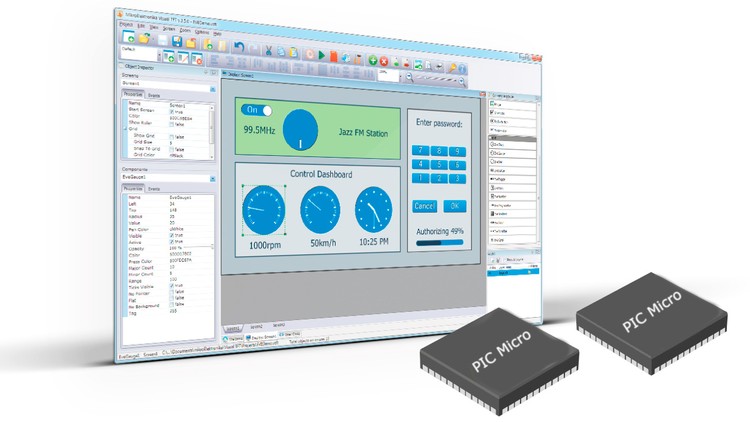
Interface PIC Microcontroller using Serial Communication RS232 or USB and a Visual Interface
What you will learn
Interface Microcontroller with Computer or Laptop via Serial Communication RS232 or USB
Create a Visual Interface for Your System
Interface PIC Microcontroller with Computer or Laptop via USB Port
Create a Visual Interface for Your System to easily Control It
Write a Code to Make PIC Microcontroller recognize USB and use it to send and receive data
Control PIC Microcontroller using USB Port and a Computer
Know how USB function and learn about it’s internal structure
Write code for USB Interfacing
Embed code in the design
Program PIC Microcontroller like a champ
Understand the principles of USB Interfacing and programming in PIC Microcontrollers
Connect your PIC Microcontroller to PC or Laptop and control it using USB Interfacing
Understand basic principles of USB Interfacing
Description
>>> Interface PIC Microcontroller using Serial Communication RS232/USB and a Visual Interface <<<
Welcome to this course.
In this Course You will Learn how to Move to the next Level in Communication between Microcontrollers and Computers, You will get a step by step guide on How to create A visual Interface in your computer/Laptop that will send and receive data to and from a Microcontroller using RS232 Serial Communication Standard or USB.
Why You should take this Course:
- More than 3.5 Hour of Full HD Content
- Supporting Material and Example Codes
- Step by step explanation of connection diagrams and coding stages
- Certificate of Completion when you finish the course
- Simulation and Practical lessons to Cover everything there is to know about USB and RS232 Serial Communication
You will be able to communicate with your Microcontroller and build a fully functional interactive system that will make it easy for your to monitor different variables such as temperature, and send control signals to turn on of off system devices such as fan or heater.
Serial/USB Communication provides means to control any type of Microcontroller via your own computer whether it’s a desktop or a laptop, what you need to do is just create the proper interface which we will teach you how to do in this course.
This course will be your gate, and you will have no limits, you can make a temperature control, RC robot, SCADA System and a lot of other applications via serial interfacing.
Everything you wanted to know about USB Interfacing but was too afraid to ask, or Asked without getting Answers!
This Course also contains a Step By Step Guide to USB Interfacing with PIC Microcontroller
This USB Section Consists of 39 Lecture with more than 3 hours of HD Video Content and supplementary material in which we cover every aspect of USB Interfacing including teaching you how to design, simulate and connect everything in real life, I can assure you that after this course you will be a professional in USB Interfacing with PIC Microcontroller
Why You Should Use USB Interfacing:
- Higher speed than any conventional interfacing method
- Only Four wires are used (Two PIC Microcontroller Pins are needed to connect more than 100 device via USB)
- Low power consumption
- Support and Libraries